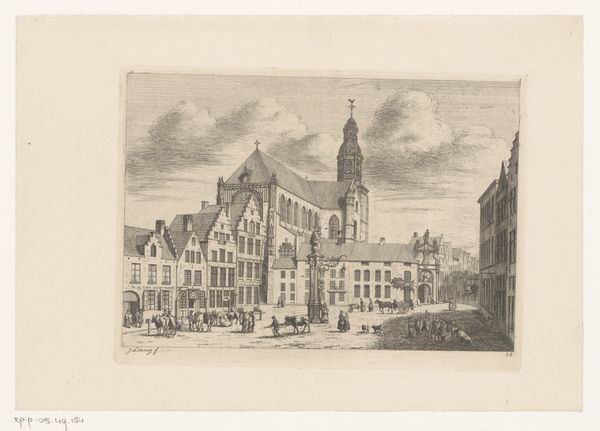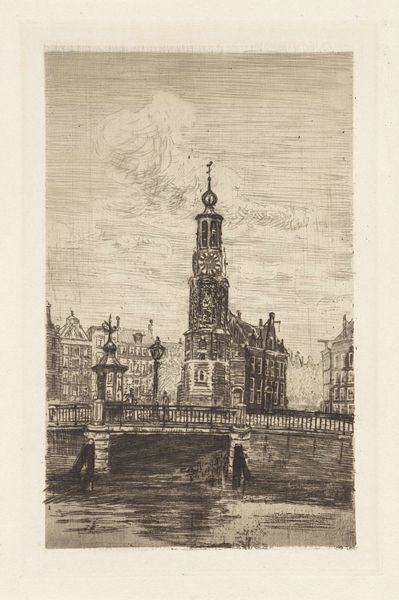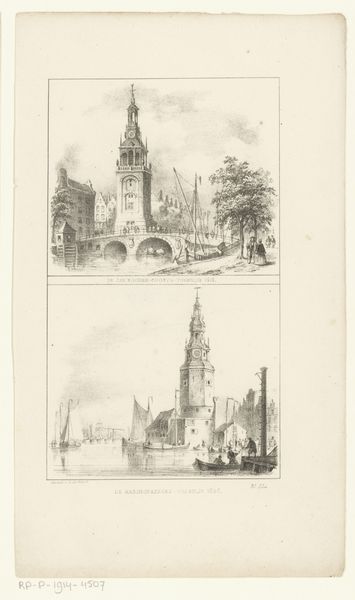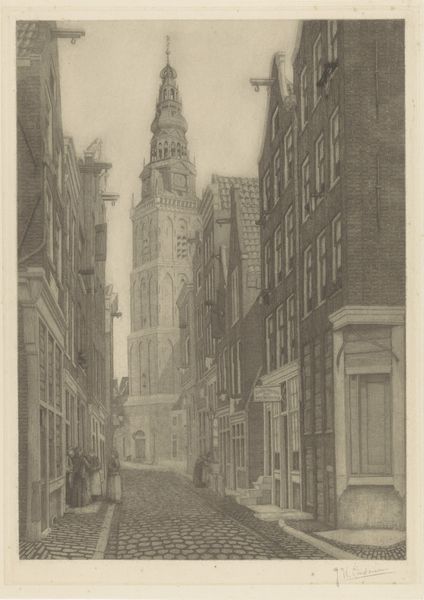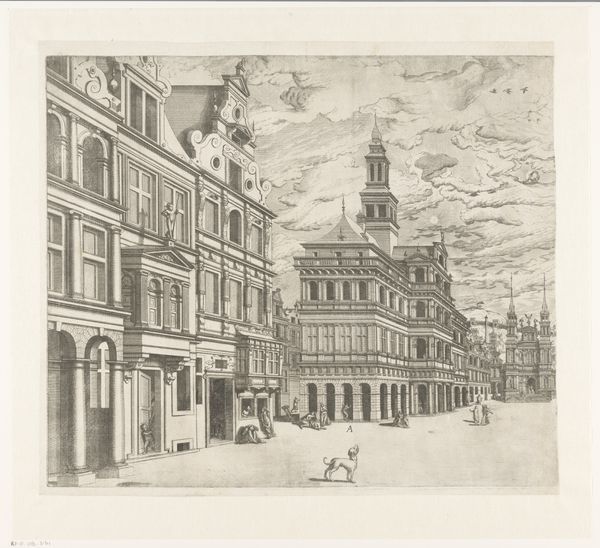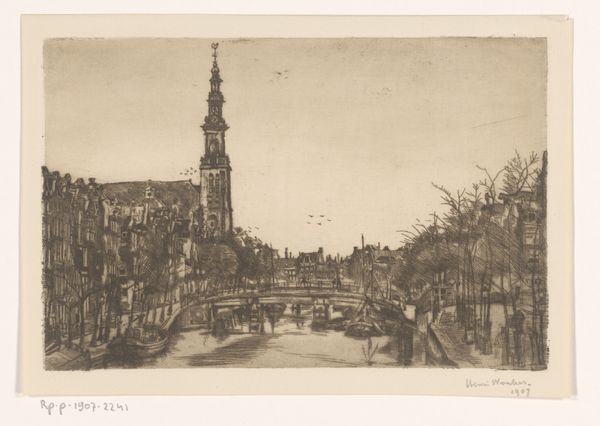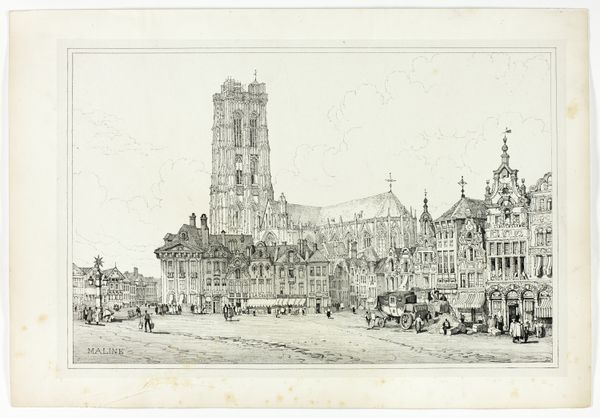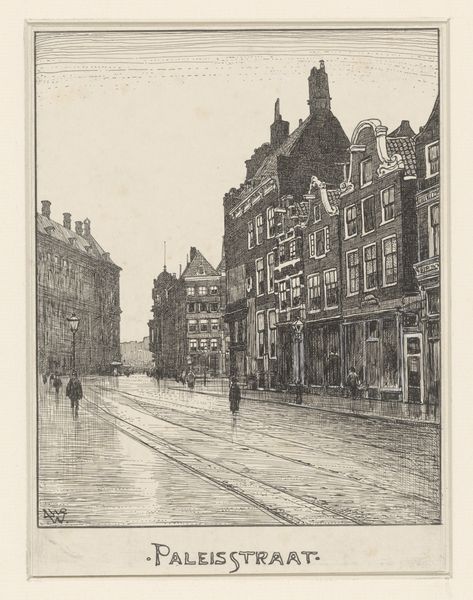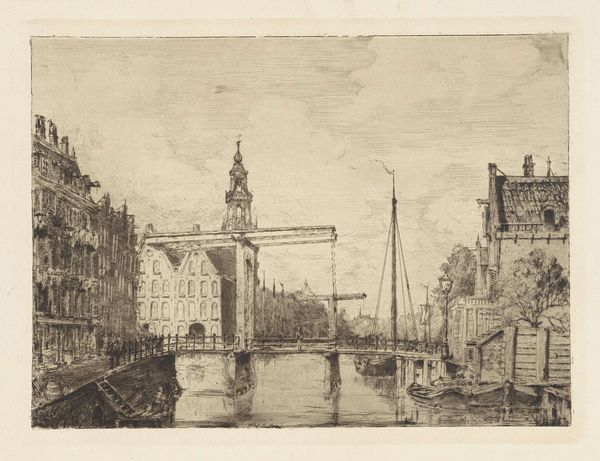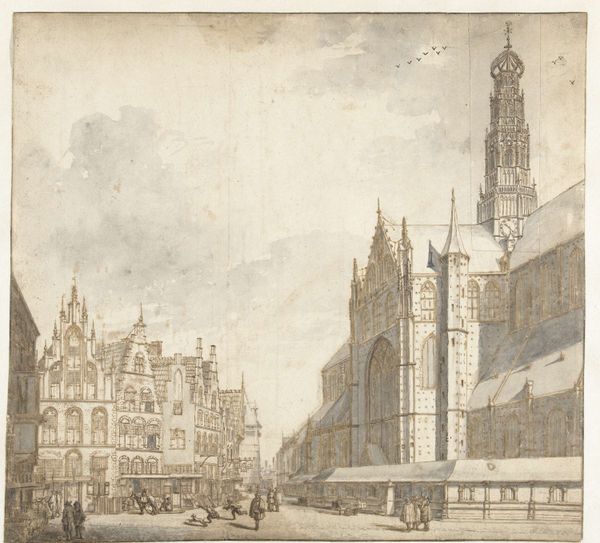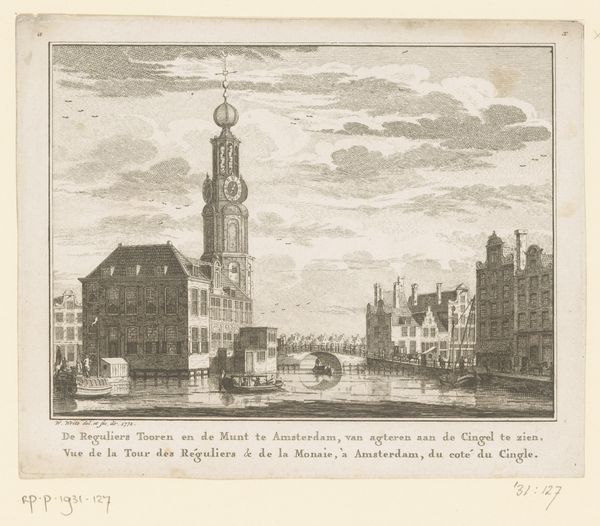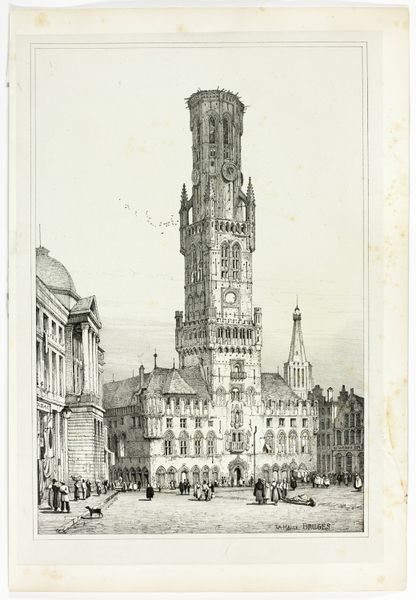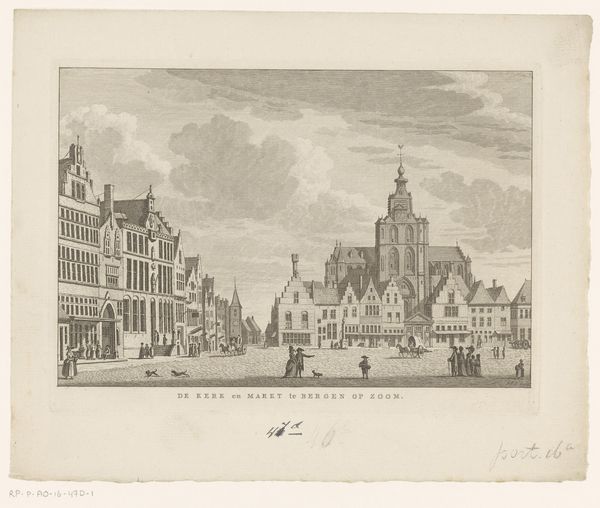
print, etching
# print
#
etching
#
19th century
#
cityscape
#
street
#
realism
Dimensions: width 296 mm, height 197 mm
Copyright: Rijks Museum: Open Domain
Editor: Here we have Johan Conrad Greive’s "Gezicht op het Muntplein van Amsterdam," possibly made between 1847 and 1884. It's an etching, a print of a cityscape. I'm struck by the incredible detail. It feels like you could get lost in the scene. What stands out to you? Curator: I see an intense study of labor embedded in the very fabric of the city. Consider the copperplate used for the etching; its extraction, refinement, and preparation all involve human effort. And then there's Greive himself, painstakingly etching this scene. Notice how the image isn't just about the architecture, but the everyday lives—the bustling marketplace, the people moving goods. What kind of work do you think is represented here? Editor: I see people walking, perhaps shopping, and there are horse-drawn carts... transportation of goods? Is the etching medium significant? Curator: Precisely! Etching, unlike painting, allowed for reproducibility. Prints like these made images of Amsterdam accessible to a broader public. This changed the consumption and distribution of art. Who had access to the image, and what kind of image of labour did that encourage or dissuade? Editor: That’s interesting. So it's not just about the artistic skill, but also about making art more widely available and shaping perceptions of labour through its portrayal. Curator: Exactly. This challenges the romantic notion of the solitary artistic genius. The social and economic conditions are integral to understanding the artwork itself, and not just its subject matter. Editor: I never thought about it that way, framing the making and circulation of the artwork itself within an economic system, alongside its actual imagery. Curator: The means of production always inform the final product, and our interpretation of it. It shifts the focus from pure aesthetics to a broader understanding of materiality and its role in art history. Editor: It really puts things into perspective. Thank you for that!
Comments
No comments
Be the first to comment and join the conversation on the ultimate creative platform.
